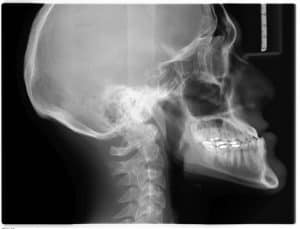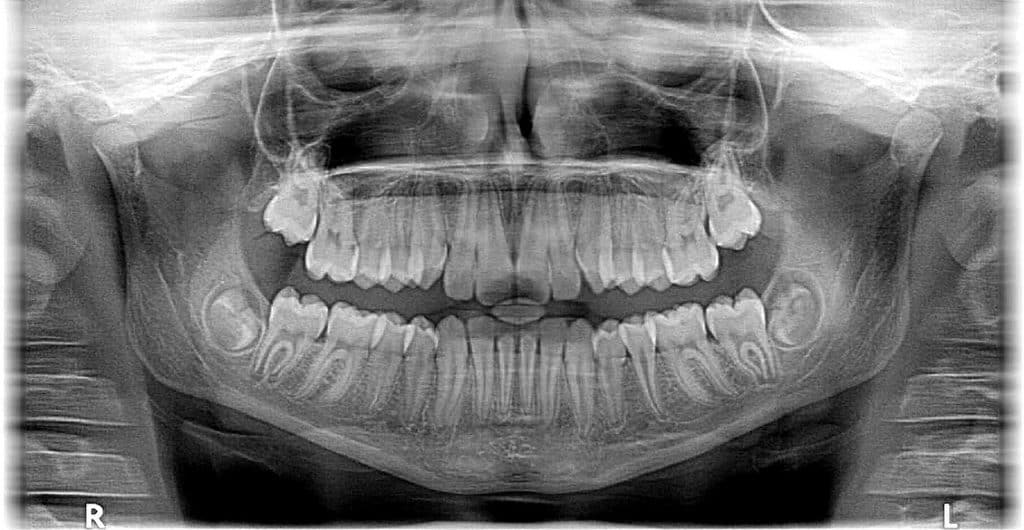What Do Dentists Look for in X-Rays? (It’s Not What You’d Expect)

X-Rays Are Important & Help Us Uncover Dental Issues That Are More Thank Skin-Deep
While getting x-rays at the dentist might not be on your list of favorite things to do, it should be on your list of most important things to do. X-rays can help dentists spot problems in your mouth far before they are large or painful enough to be noticed. But, what exactly are dentists looking for when they view your x-ray images? It might not exactly be what you expected.
Dr. Haney: The #1 Thing We’re Looking for Is Decay (Cavities) Between Teeth
“These areas aren’t visible to us during a clinical exam, so the radiograph lets us view these areas.” He also explained that “there are lots of other things that we look for too; if there is calculus (plaque underneath your gums) visible on the film, that is a sign of gum disease.”
Dentists use different types of x-ray images to capture photos of your teeth. There are bitewing, periapical, occlusal, panoramic and digital x-rays, all of which are used to capture different views and angles of your mouth. This allows them to catch cavities and other problems that might not be as easily noticed.
Here are 5 things your dentist is looking for in your x-rays:
Decay
Did you know that decay (cavities) is the #1 cause of jaw pain? If tooth decay goes undetected, it can result in cavities, pain, infection and even tooth loss! X-rays help us detect decay early so we can treat the issue as soon as possible.
Bone Loss
Since your bones support your teeth, it is important that they are not being damaged by gum disease. When detected early, your dental team can put together a plan before there is too much damage.
Below the gum line problems like impacted teeth, abscesses, cysts, tumors & bone changes
Occasionally we need to take large panoramic radiographs that show the entire jaw. These are helpful in children and teenagers for showing any potential tooth eruption problems and wisdom tooth development. This can also be helpful in adults periodically to check for dental cysts or TMJ concerns.
Finding extra teeth, jaw fractures, cleft palate & even foreign objects
We look for fractures or breaks in the roots from trauma or infections from the tooth that manifest as dark areas around the roots.
Plaque that forms in the carotid artery (yes, you read that right)
While this dental x-ray finding might be rare, we’ll let Dr. Haney tell the story…
“I’ve even picked up plaque that formed in a patient’s carotid artery in a panoramic image and referred them back to their cardiologist with the image. So while cavities are the main concern, there are lots of other conditions we look for too.”
While the plaque that Dr. Haney found in his patient’s carotid artery is different from dental plaque (it is calcification or hardening of the arteries that can lead to stroke or death), it was a great find nonetheless! If you’re thinking you don’t need x-rays, it’s always a good idea to get them done.
Related Posts:
Recent Posts
- When to Call an Emergency Dentist
- Pi(e) Day Perfection: Balancing Sweet Treats with Healthy Teeth
- The Myths And Facts Of Getting A Straighter Smile
- How To Manage Teeth Sensitivity In A Hot Drink Season
- Maximizing Your Dental Insurance Benefits Before New Year’s
Archives
- April 2024
- March 2024
- February 2024
- December 2023
- September 2023
- July 2023
- January 2023
- November 2022
- October 2022
- September 2022
- August 2022
- May 2021
- March 2021
- February 2021
- January 2021
- October 2020
- May 2020
- November 2017
- October 2017
- August 2017
- July 2017
- June 2017
- May 2017
- March 2017
- February 2017
- January 2017
- December 2016
- November 2016
- October 2016
- September 2016
- July 2016
- June 2016
- May 2016
- March 2016
- February 2016
- December 2015
- November 2015
- October 2015
- September 2015
- August 2015
- June 2015
- May 2015
- April 2014
- March 2014
- January 2014


